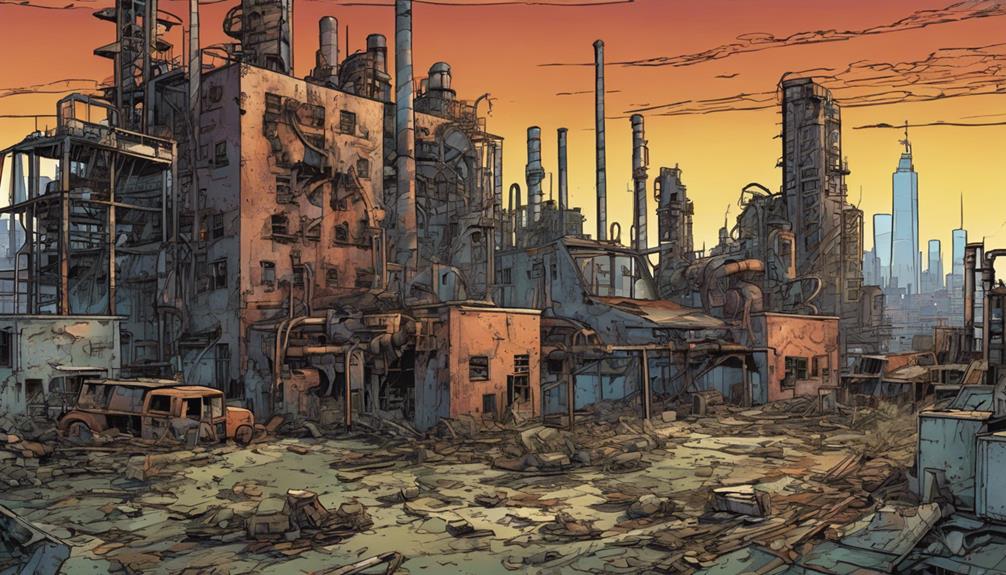Cyclical unemployment happens when the economy slows down, causing businesses to cut jobs. You'll notice higher unemployment rates during recessions, as less consumer demand leads to layoffs. This type of unemployment directly ties into the ups and downs of the business cycle. As jobs disappear, competition for existing positions increases, creating challenges for job seekers. Additionally, prolonged cyclical unemployment can erode skills and delay economic recovery. With government interventions like stimulus packages and tax cuts aiming to stabilize the labor market, there's much to uncover about the broader implications of these economic shifts. Explore how these factors intertwine further.
Key Takeaways
- Cyclical unemployment arises from economic downturns, leading to job losses as businesses reduce costs during recessions.
- It directly correlates with the business cycle, with higher unemployment rates during GDP declines.
- Historical events, like the Great Recession, illustrate the long-lasting impacts of cyclical unemployment on job recovery.
- Government interventions, such as stimulus packages, aim to mitigate the effects of cyclical unemployment and stabilize the labor market.
Understanding Cyclical Unemployment
Cyclical unemployment arises when economic downturns hit, leaving many workers without jobs as businesses respond to declining consumer demand. This type of unemployment directly correlates with the business cycle and reflects the economy's health. Cyclical unemployment tends to be more prevalent in industries that are heavily dependent on consumer spending, such as retail, hospitality, and manufacturing. During periods of economic expansion, businesses may rehire laid-off workers and even expand their workforce to meet increased demand. On the other hand, during economic downturns, companies may implement cost-cutting measures, including workforce reductions, to weather the downturn. In some cases, businesses may also consider the benefits of office relocation to lower-cost locations in order to stay afloat during challenging economic times.
When GDP drops considerably, companies often have to lay off employees to cut costs, leading to increased unemployment rates. Historical data shows that during recessions, these rates can spike dramatically.
Economists monitor these trends to predict future cycles and adjust government policies accordingly. Stimulus packages may be deployed to mitigate the effects, aiming to stabilize the labor force.
Recognizing the signs of cyclical unemployment can help you make informed decisions about your career and job search strategies.
Economic Downturn Stages
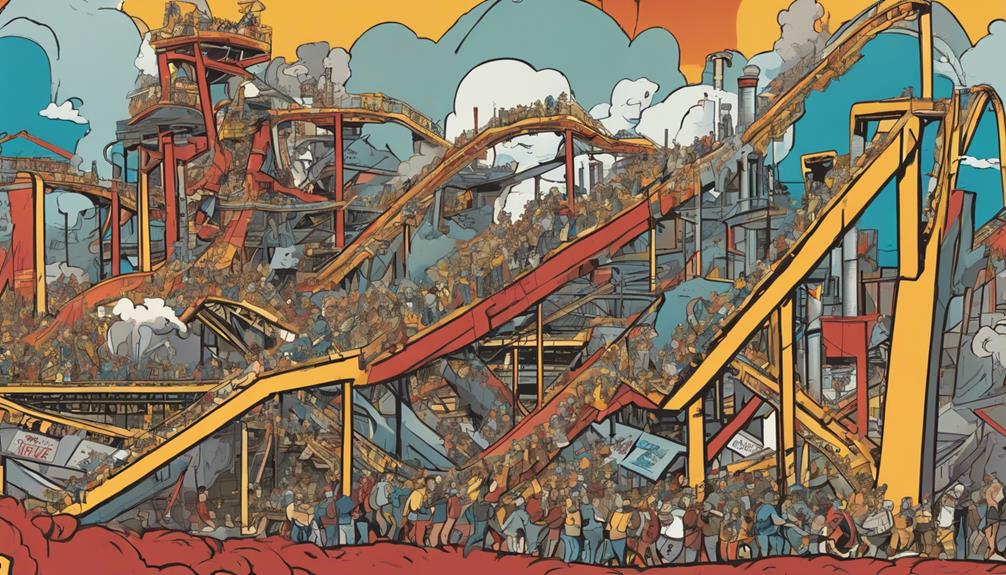
Understanding the stages of an economic downturn is essential for steering the impacts of cyclical unemployment on your career and job prospects.
The downturn typically starts with a recession, where consumer demand drops. This leads to layoffs as companies adjust their workforce.
As the recession progresses, unemployment rates may fluctuate, and you might notice increased competition for jobs.
Eventually, the economy begins to recover, often indicated by rising consumer demand. Once this happens, employees start returning to work, signaling that the job market is stabilizing.
Historical Perspectives
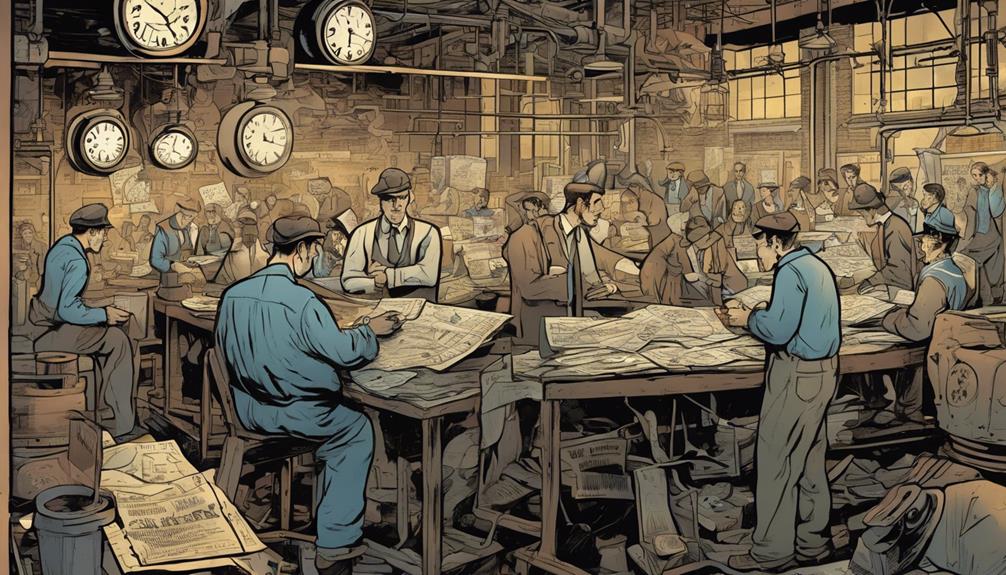
Throughout history, various economic downturns have shaped the landscape of cyclical unemployment, offering valuable lessons for steering future job markets.
You can see how events like the Great Recession (2007-2009) exposed vulnerabilities in the financial system, leading to widespread job losses. Similarly, the Oil Embargo Recession (1973-1975) demonstrated how external shocks can trigger significant unemployment spikes.
Analyzing these historical examples allows you to recognize patterns, such as the lag in job recovery following downturns. By understanding these trends, you can better prepare for economic fluctuations.
Awareness of past economic challenges equips you with insights for maneuvering potential future crises, helping you make informed decisions during uncertain times.
Types of Unemployment
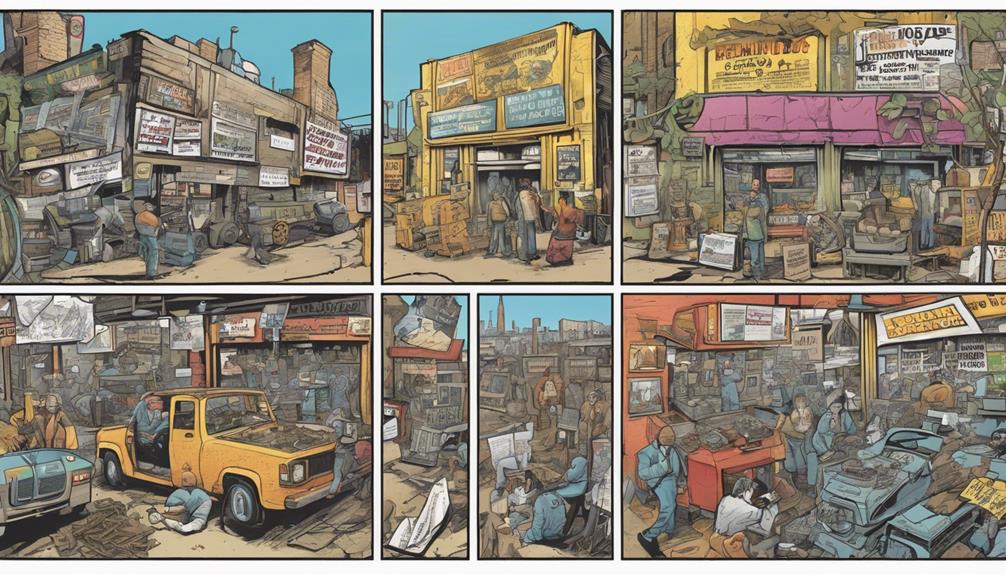
Various types of unemployment can greatly impact the economy and your career prospects. You might encounter cyclical unemployment when economic downturns lead to job losses, while structural unemployment arises from a mismatch between your skills and the job market demands.
Frictional unemployment, on the other hand, is temporary and occurs when you voluntarily leave a job, reflecting a healthy economy. Seasonal unemployment affects specific industries, like agriculture or tourism, based on seasonal demand.
Long-term unemployment can result from prolonged economic shifts, leaving you without work for extended periods. Understanding these types helps you navigate your career more effectively and prepare for potential challenges in the job market.
Stay informed to enhance your job security and employability.
Government Interventions
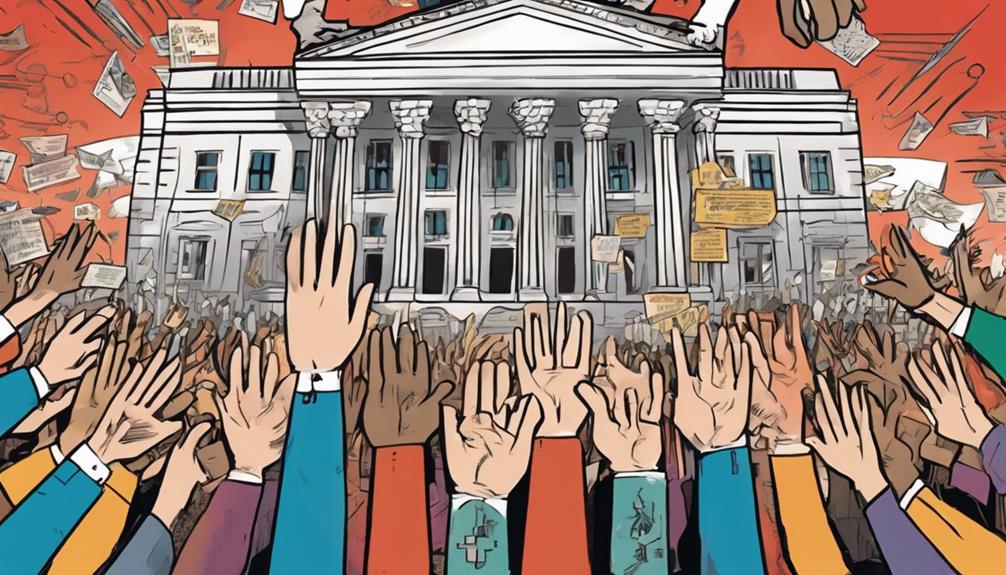
Government interventions play an essential role in mitigating the effects of cyclical unemployment and stabilizing the economy during downturns.
By implementing stimulus packages, governments can boost consumer demand and create job opportunities. You might notice tax cuts and increased public spending aimed at keeping businesses afloat and encouraging hiring.
Additionally, central banks often adjust monetary policies, such as lowering interest rates, to stimulate borrowing and investment. These measures help protect workers from prolonged unemployment and support overall economic recovery.
Keeping a close eye on economic indicators allows you to understand when these interventions are necessary, enabling timely responses to emerging economic challenges.
Ultimately, effective government actions can pave the way for a quicker return to full employment.
Economic Consequences
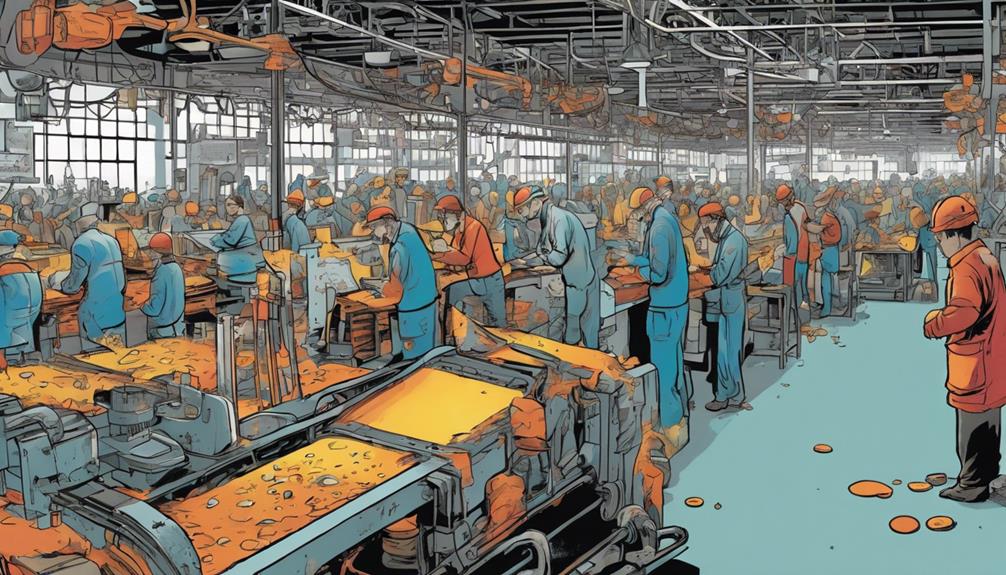
Cyclical unemployment can lead to significant economic consequences, affecting both individuals and the broader market. When job losses increase, consumer spending typically declines, creating a ripple effect that stifles business revenue and growth.
You may find yourself facing reduced job security, making it harder to invest in your future or even cover daily expenses. As unemployment rates climb, government resources become strained, potentially resulting in cuts to essential services.
Additionally, prolonged cyclical unemployment can cause skill erosion among workers, making it tougher to re-enter the job market once conditions improve. This cycle not only affects your personal finances but can also stall overall economic recovery, delaying the return to stability and growth for everyone involved.
Current Economic Indicators
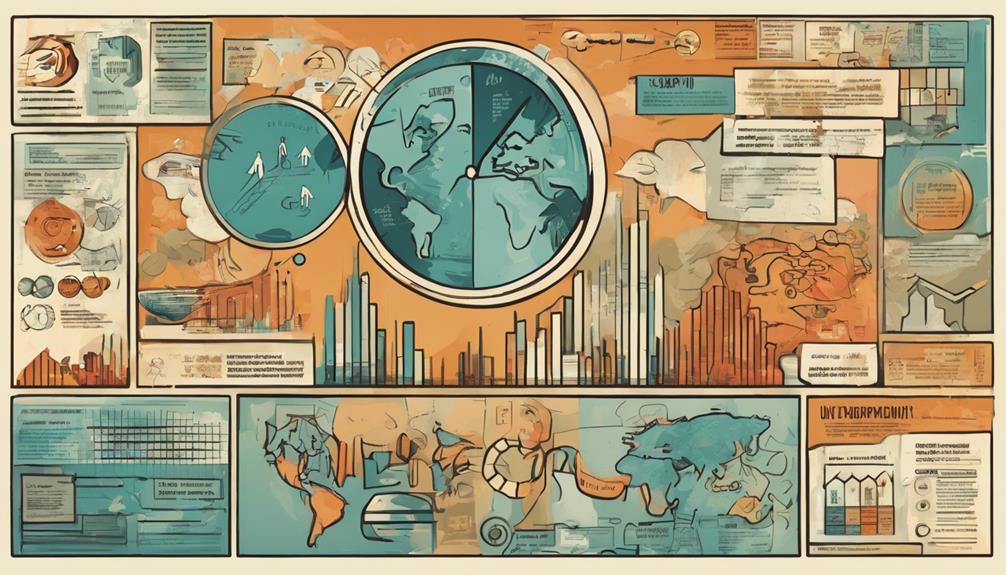
As economic conditions shift, key indicators like GDP growth and consumer spending patterns provide valuable insights into the likelihood of cyclical unemployment. You should pay close attention to these metrics, as they often signal impending job market changes.
For example, a decline in GDP usually correlates with rising unemployment claims, suggesting companies are laying off workers. Additionally, fluctuations in consumer spending can indicate reduced demand for goods and services, leading businesses to downsize.
Monitoring these indicators helps you predict potential job insecurity and prepares you for necessary career adjustments. Staying informed about wage growth and job vacancies also plays an essential role in understanding the current labor market landscape and anticipating cyclical trends.
Workforce Adaptations
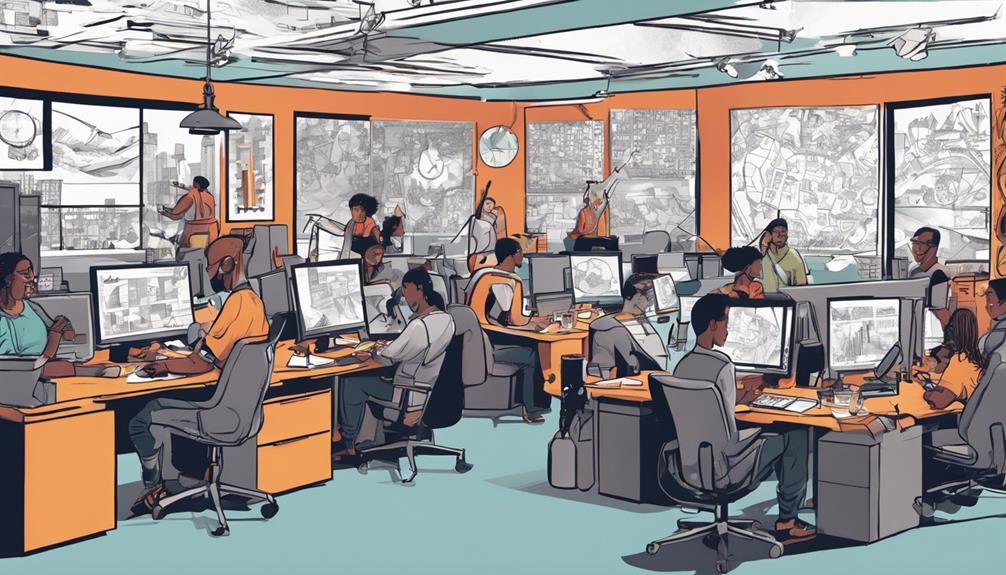
Adapting to changing job market demands is essential for maintaining employment stability during economic fluctuations.
You need to stay aware of industry trends and emerging skills that employers seek.
Upskilling through online courses or vocational training can enhance your employability.
Networking within your field can open doors to new opportunities and provide insights into market shifts.
Embracing technology and being flexible in job roles will also give you a competitive edge.
Remember, job security often relies on your ability to pivot and respond to economic changes.
Conclusion
Maneuvering through cyclical unemployment can feel like sailing through a stormy sea. Just as a skilled sailor adjusts their sails to harness the wind, you can adapt your skills to shifting job demands.
Historical data shows that during the 2008 recession, unemployment peaked at 10%, yet those who upskilled found new opportunities.
By staying informed and flexible, you can weather the economic storms, ensuring you're ready to steer toward calmer waters and brighter career prospects.
